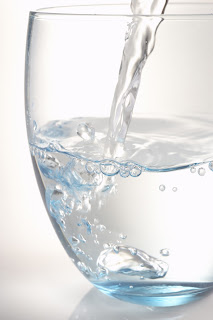Learn more about best-selling author Trina Boice and her books. Enjoy contests, freebies, tips and more!
Tuesday, September 20, 2011
Are You Prepared?
Disasters can happen anytime, anywhere. We're seeing devastating catastrophes all over the world. September is National Emergency Preparedness Month. Now is the time to gather some emergency supplies and create 72 hour kits for each family member and each car. After serious disasters, you may be on your own until help arrives. In case of evacuation, you'll need food, clothing, camping equipment, cash, medicine and personal identification. Supplies can simply be kept in a backpack near your garage door or closet for quick access.
FEMA Administrator Craig Fugate said “Iencourage everyone to take a few minutes and discuss what you would do in caseof an emergency or disaster. The public is the most important member of ournation’s emergency response team and the more the public does to be prepared,the more successful this team will be.”
We can livefor three weeks without food, but only three days without water. Finding clean drinking water, therefore,becomes a top priority during a disaster. Because city water may become contaminatedduring a disaster or completely cut off, you need to have a back-up plan. Experts recommend storing at least threegallons of water per person per day for fourteen days. Water can be stored in glass or durableplastic, refreshing the contents every year. Never store water in metal, vinylplastic or in containers previously used for chemicals or hazardous material.
You’ll alsowant to store water treatment supplies, such as unscented bleach, tools forboiling water, and a water filter. Before drinking uncertain source water,you’ll need to disinfect and filter it. History reveals that more people die AFTER a disaster from water-bornediseases than died because of the initial disaster. The deathly spread of cholera in Haiti after their devastating earthquake is a perfect example of that. Even a “Boil Water Alert” from your localcity after a simple water main break can feel like a disaster if you’reunprepared.
Thefollowing are some steps to treating water to make it more safe for drinking.
1. Clarify: Remove debris. If there are a lot of leaves, dirt or otherparticulate matter in the water source, run the water through a coffee filter, cheesecloth, or piece of fabric.
2. Disinfect: Harmful bacteria canbe killed by boiling or by chemical disinfection, but both treatments may stillleave harmful contaminants, so filtering is required as the final step. Bring water to a boil for five minutes (addone minute for every 1000 feet above sea level). Another way to kill bacteria is to addhousehold bleach to the source water, about 1/8 teaspoon (10 drops) per gallon.Never use scented bleach, and double the amount if your bleach is older than ayear. Allow the bleached water to standfor an hour or more before filtering it. Follow the manufacturer’s guidelines if using Chlorine tablets instead.Iodine tablets are not recommended anymore.
3. Filter: Once your water hasbeen clarified and disinfected, you’ll need to filter it to remove harmfulhealth contaminants, as well as to remove the chlorine taste. Purchase a good NSF certified solid-activatedcarbon filter. The filter could be youreveryday filter or a portable one you could take with you during anevacuation.
Beingprepared brings peace of mind for you and your loved ones. Spend some time with your family talkingabout how to be better prepared for various emergency scenarios, as well aspracticing the actions you’ll take. Print out the instructions above and keep them with your water treatmentsupplies. For moreinformation, visit http://www.fema.gov/privatesectorpreparedness/
Subscribe to:
Post Comments (Atom)

No comments:
Post a Comment